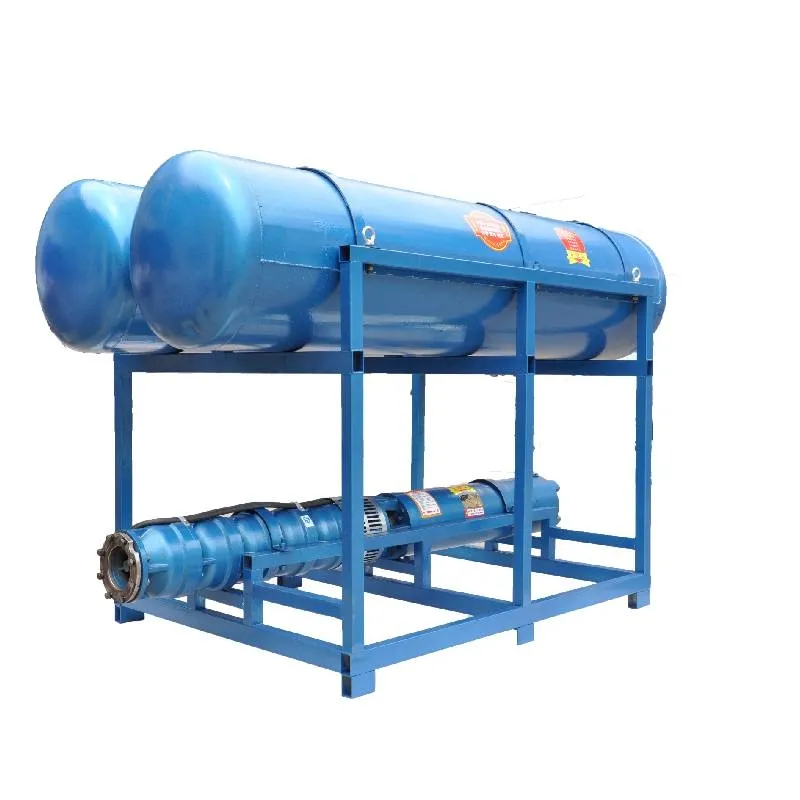Nov . 15, 2024 13:59 Back to list
submersible pressure pump
Submersible Pressure Pumps An Overview
Submersible pressure pumps are essential devices used in various applications, particularly in water management, agriculture, and industrial processes. Designed to operate underwater, these pumps are submerged directly in the liquid they are pumping, making them highly efficient for specific environments. This article explores the features, advantages, and applications of submersible pressure pumps.
What are Submersible Pressure Pumps?
A submersible pressure pump is a type of centrifugal pump that is hermetically sealed and operates underwater. Unlike traditional pumps that are mounted above the liquid surface, submersible pumps are installed directly in the fluid, typically at the bottom of a well, borehole, or storage tank. This design allows for the movement of water—or other fluids—over considerable distances and heights, making them highly effective for lifting water from deep sources.
Key Features
1. Compact Design Submersible pumps are compact and usually cylindrical, which allows them to fit into tight spaces like wells and basements. Their streamlined design also minimizes the risk of cavitation, which can reduce pump efficiency and lifespan.
2. Durability These pumps are built with robust materials to withstand harsh conditions. Many submersible pumps are constructed from stainless steel or other corrosion-resistant materials, making them suitable for challenging environments—including saltwater and wastewater applications.
3. Integrated Motor Submersible pumps feature a motor that is also submerged in the liquid. This eliminates the need for long drive shafts and reduces the risk of mechanical failure due to misalignment or wear.
4. Efficient and Economical With their ability to work submerged, these pumps are often more energy efficient than traditional alternatives. They typically operate at lower power levels, leading to reduced operational costs over time.
Advantages
submersible pressure pump

1. Reduction of Noise and Vibration Since submersible pumps operate below the surface, they produce significantly less noise and vibration compared to surface-mounted pumps. This characteristic is particularly beneficial in residential areas or noise-sensitive environments.
2. Automatic Priming Submersible pumps do not require priming, as they are always submerged in the liquid. This feature prevents air from entering the pump, which can lead to inefficiencies and potential damage in other types of pumps.
3. Safety By being placed underwater, submersible pumps reduce the risks of hazards associated with surface pumps, such as spills or leaks. This aspect is especially important in applications involving hazardous liquids.
4. Versatile Applications These pumps can handle various fluids, including clear water, sewage, and chemicals, making them suitable for a wide range of industrial and municipal applications.
Applications
Submersible pressure pumps are used in numerous fields, including
- Well Water Extraction Farmers and homeowners utilize submersible pumps to extract groundwater effectively from wells for irrigation and domestic use. - Wastewater Management In municipal wastewater treatment facilities, submersible pumps help to move wastewater from one treatment stage to another, ensuring a continuous flow through the system. - Construction In construction projects, these pumps are essential for dewatering excavations to keep sites dry and manageable. - Flood Control During heavy rain or flooding events, submersible pumps are used to remove excess water quickly, protecting properties and infrastructure.
- Aquaculture Fish farms and aquariums benefit from submersible pumps for water circulation and filtration.
In summary, submersible pressure pumps are indispensable in modern fluid management systems. Their efficient operation, durability, and versatility make them suitable for various applications, ranging from agricultural irrigation to wastewater treatment. With ongoing advancements in technology, these pumps continue to evolve, promising even greater efficiency and reliability for future fluid handling needs.
-
Submersible Water Pump: The Efficient 'Power Pioneer' of the Underwater World
NewsJul.01,2025
-
Submersible Pond Pump: The Hidden Guardian of Water Landscape Ecology
NewsJul.01,2025
-
Stainless Well Pump: A Reliable and Durable Pumping Main Force
NewsJul.01,2025
-
Stainless Steel Submersible Pump: An Efficient and Versatile Tool for Underwater Operations
NewsJul.01,2025
-
Deep Well Submersible Pump: An Efficient 'Sucker' of Groundwater Sources
NewsJul.01,2025
-
Deep Water Well Pump: An Efficient 'Sucker' of Groundwater Sources
NewsJul.01,2025
-
 Submersible Water Pump: The Efficient 'Power Pioneer' of the Underwater WorldIn the field of hydraulic equipment, the Submersible Water Pump has become the core equipment for underwater operations and water resource transportation due to its unique design and excellent performance.Detail
Submersible Water Pump: The Efficient 'Power Pioneer' of the Underwater WorldIn the field of hydraulic equipment, the Submersible Water Pump has become the core equipment for underwater operations and water resource transportation due to its unique design and excellent performance.Detail -
 Submersible Pond Pump: The Hidden Guardian of Water Landscape EcologyIn courtyard landscapes, ecological ponds, and even small-scale water conservancy projects, there is a silent yet indispensable equipment - the Submersible Pond Pump.Detail
Submersible Pond Pump: The Hidden Guardian of Water Landscape EcologyIn courtyard landscapes, ecological ponds, and even small-scale water conservancy projects, there is a silent yet indispensable equipment - the Submersible Pond Pump.Detail -
 Stainless Well Pump: A Reliable and Durable Pumping Main ForceIn the field of water resource transportation, Stainless Well Pump has become the core equipment for various pumping scenarios with its excellent performance and reliable quality.Detail
Stainless Well Pump: A Reliable and Durable Pumping Main ForceIn the field of water resource transportation, Stainless Well Pump has become the core equipment for various pumping scenarios with its excellent performance and reliable quality.Detail
